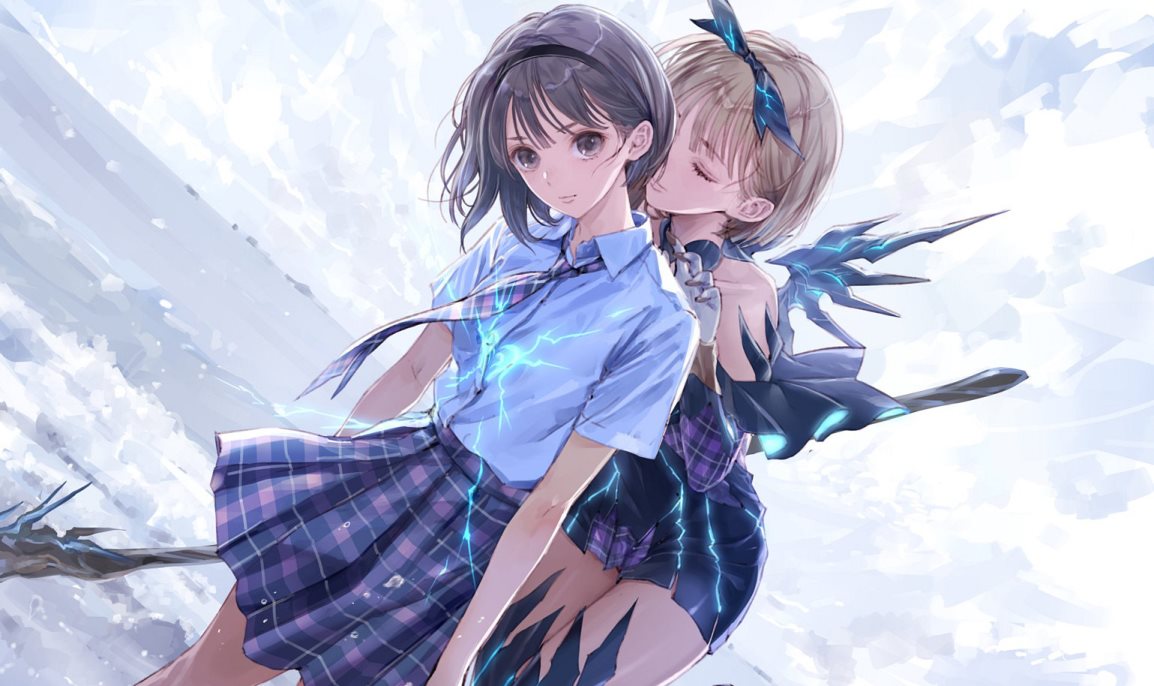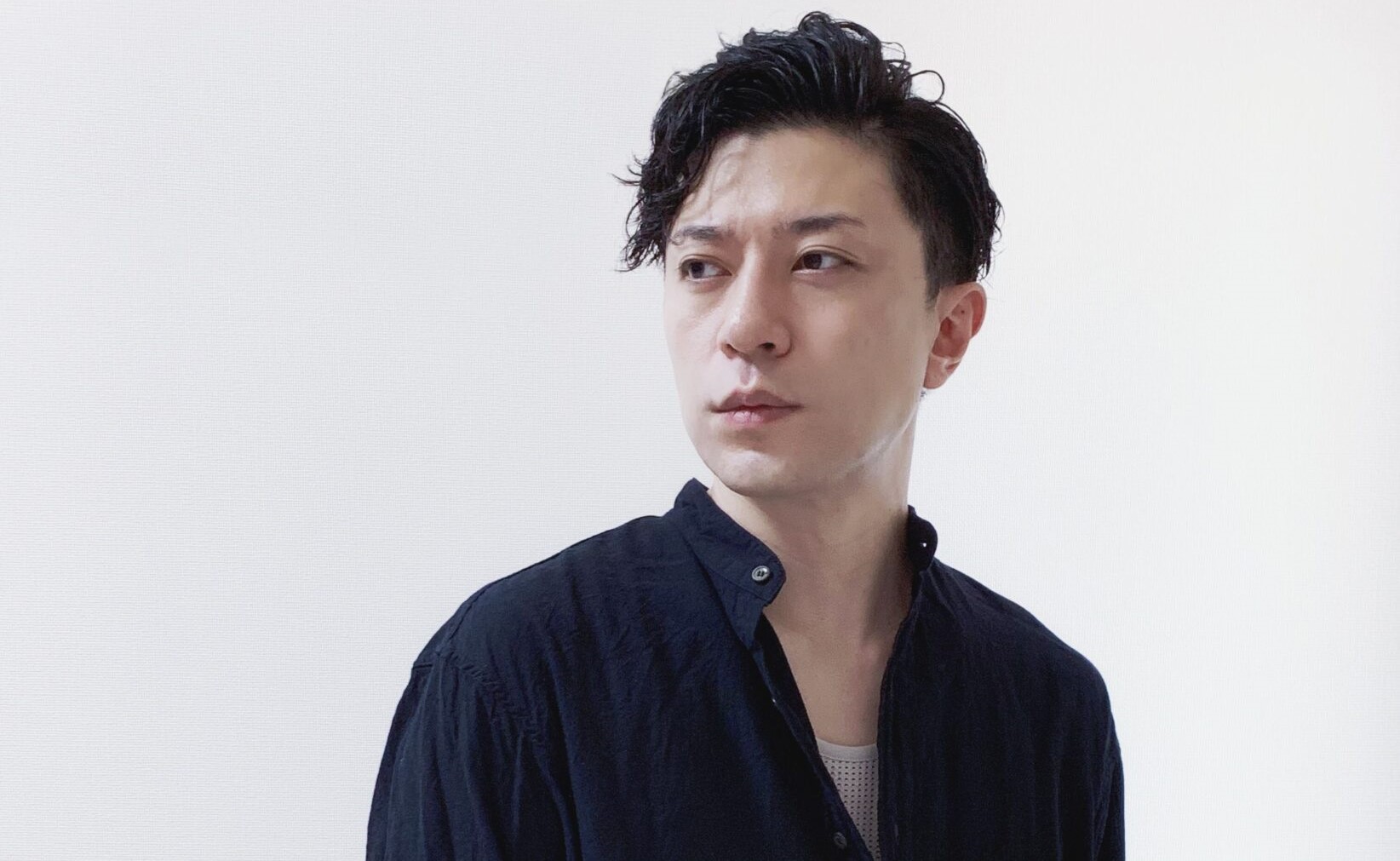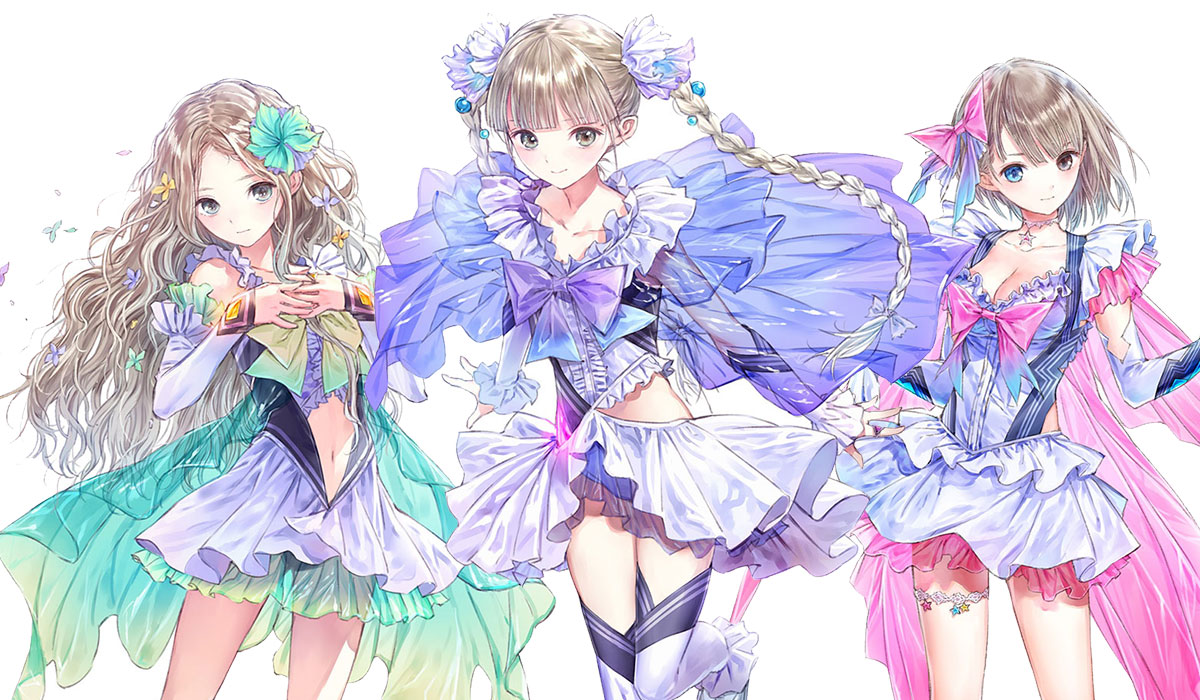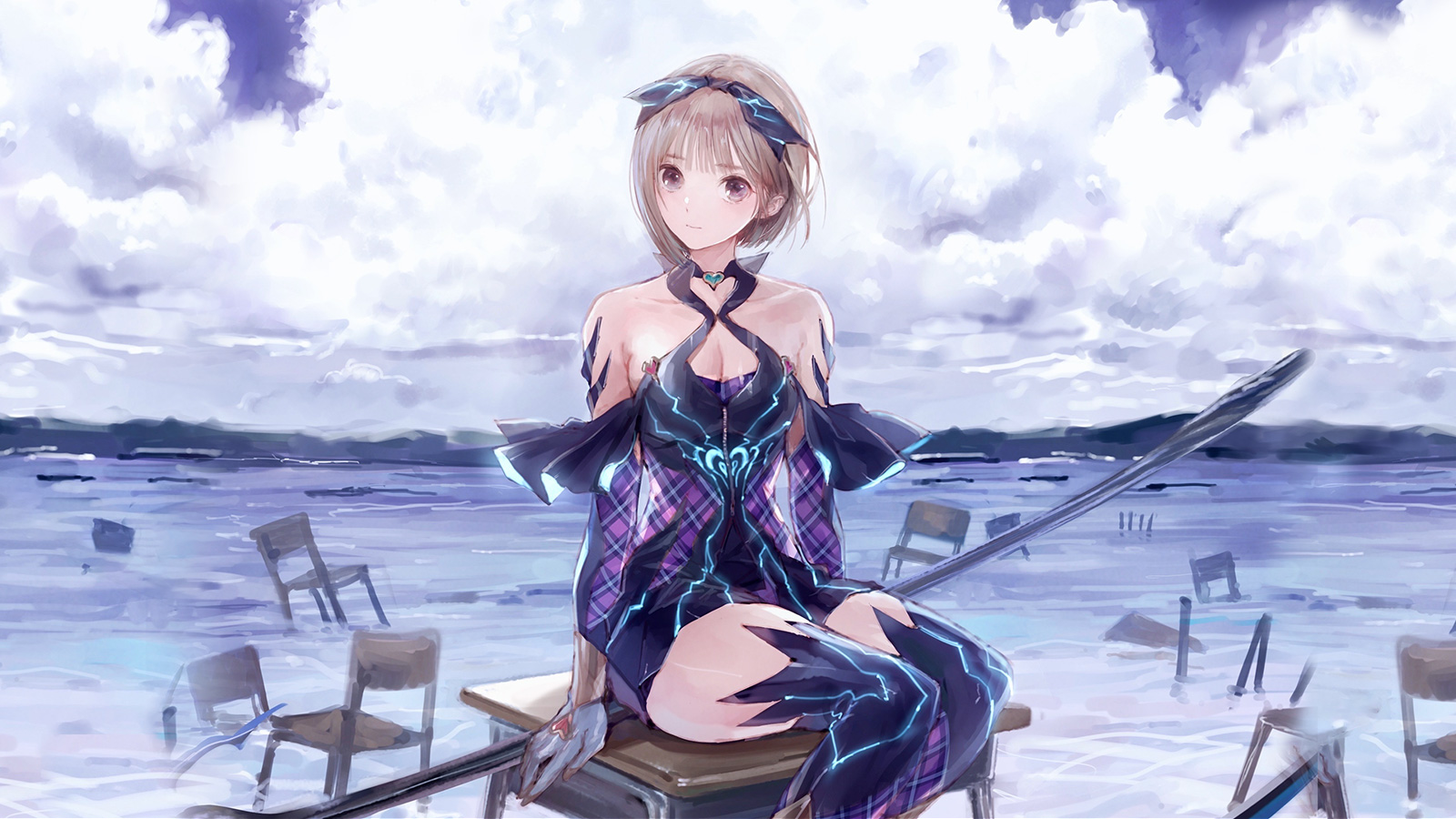Mel Kishida wants his career to be defined by his work on the Blue Reflection series. If you remove this particular series, he’s still an enormously accomplished artist, but Blue Reflection in particular is something that he is deeply and personally involved with.
Related reading: My preview of the upcoming Blue Reflection: Second Light.
When I asked him what he feels his legacy will be, there was no hesitation in the answer. “I want people to be aware of and know me for the Blue Reflection series, including the first game, anime tie-in as well as the other products that are that are part of the project,” Kishida said. “There are other people that will more strongly identify me by what I did with the Atelier series, perhaps, but I hope that I can shift that so people look at Blue Reflection and see my identity in it.”
Kishida – who is now aged 38 – has credits stretching back to 2005 across light novels, anime and games. It has been a productive career for someone so early into it. But for many people, it was that 2009 video game and first collaboration with Gust, Atelier Rorona, which established him as an artist to watch. His work carries common themes and those were on display in full in Rorona. He likes drawing girls and making them beautiful, and he has a knack for fan service that is itself beautiful, ethereal, and graceful, rather than the kind of titillation and pin-up aesthetic that artists often aim for. That’s a less common aesthetic eye that you might think, so Kishida’s art tends to be distinctive when you look at it, even if you’re not immediately aware that he was behind it.
Rorona set him up, but fast forward to 2017, and with Blue Reflection Kishida really hit his stride. The game was such a success for his vision that it is something of a rarity: it’s a project in that the character artist has become the de facto creator credited with the project. Generally, video games are attributed to the directors, producers, or the entire studio. You can think about just about any name in the industry that we cite when talking about the person/people that “made” a game and this is the case. Hideo Kojima, Goichi Suda, Yoko Taro, Activision, Square Enix, Nintendo, Shigeru Miyamoto, and so on. These are all directors, producers, or companies. But Blue Reflection isn’t really seen as a Gust game. Nor is it credited to Takahashi Azusa (Director) or Hosoi Junzo (Producer). Certainly, they were all critical to the end result, but Blue Reflection is a Mel Kishida project.Kishida’s presence remains core to the upcoming sequel, though he did tell me that he had dialled his oversight role back a little. “With the first Blue Reflection, I was deeply involved from the beginning, from coming up with the scenarios, the systems, the music and sound. I was able to contribute a lot of my ideas across the whole project,” Kishida said.
“This time around, I haven’t taken part in nearly as many meetings, but my ideas from the first game have been carried across, of course, and while I haven’t been directly involved or as hands-on, I’ve still been able to share my creative ideas with the whole development team.”
You can see the commitment that the Gust team have to Kishida’s creative vision in Blue Reflection: Second Light. While there have been some adjustments made – one imagines an effort on Gust’s part to bring the game into alignment with successful JRPG best practices – it does still retain that same unique quality and commitment to sheer beauty that made the first such a distinctive experience.
On School Uniforms
One thing that has changed between the two is the reduced focus on some of the material that was chalked up as “extensive fan service” in the first. Most significantly, the frequent bath and shower scenes that were a common feature in the first Blue Reflection are gone. As to whether those are as “fanservicey” as many considered them to be is actually debatable. As I argued in an essay in last month’s Dee Dee Zine, bathing and showering in Japan have a different cultural resonance (and can, indeed, be a social experience) and seeing “sexualisation” and “fan service” in that is looking at it through a western gaze.
Kishida himself is adamant that the purpose of Blue Reflection – and the body of his work – has never been to be “sexy”. Nonetheless, Gust clearly wanted to dodge a bullet by removing that material Second Light, leaving a game that remains as beautiful and elegantly “fan servicey” as the original, but in such a way that will make it harder for the western media to criticise.
One key aesthetic decision that has been retained – and features prominently in a lot of Kishida’s work outside of Blue Reflection, too, is the school uniforms. It’s a common feature in Japanese anime art, commonly criticised by audiences outside of Japan, so I was interested in getting the perspective of one of the artists that does it the best as to why he’s so fascinated with the aesthetic.
The reason seems to be straightforward: In Japan, school uniforms are taken far more seriously than in the west, where there is a growing movement to do away with them entirely. Over there, there’s a fashion element to them, and stories of people who try to get their parents to put them into schools with their preferred uniform (just how prevalent that is I’m not sure, but the stories are many).
Furthermore, there’s a strong element of nostalgia about school life in Japan, as school life over there does typically involve a lot of extra-curricular activities and classmate bonding. Students work hard and face a lot of pressure in the Japanese school system, but when the weight of the work culture hits them, many find art, games, anime, and other such works that give them the chance to be nostalgic to be particularly enjoyable.
“When you ask me why I tend to draw uniforms as a motif, it’s because it’s something that a lot of people can share. There’s something very familiar about it,” Kishida said. “For people who grew up in Japan, like I have, and spent their school years in Japan, many of them will have memories in which students in uniforms are part of the visual memory.
“You’ll remember that you had a crush on a girl or something like that, and with that memory comes the memory of the uniform that they wore. So it’s not so much the uniform in itself, and I don’t draw it because I have any particular aesthetic interest in uniforms, but it’s because it calls back memories, and has a strong resonance with a lot of people that view my art. It helps people remember and relive those experiences they had in their youth.
“Blue Reflection was very much made with that thinking in mind, of conjuring up memories of what it’s like being in school, and the activities and dramas that came with that experience. It’s not so much the outfit itself, but it’s more of what it represents.”
(Side note: interestingly this mirrors comments that the director of one of the Gal*Gun games expressed to me in an interview a few years ago. Read that here.).
Colours And Budgets
One other burning question I have wanted to put to Kishida for a while is whether Blue Reflection and its sequel realise his full creative vision. After all, the common perception in video games is that it’s the expensive blockbusters that have the “good graphics,” and Blue Reflection certainly isn’t a blockbuster. So, the question then becomes would Kishida have rathered Blue Reflection have a bigger budget?
“I wouldn’t say we achieved my full creative vision with Blue Reflection – it wasn’t quite there,” Kishida said. “But it was 95 per cent of the way there. And now that we’ve been expanding the Blue Reflection world, with the second game, as well as the anime and mobile titles, and with all these different projects also taking place we have been able to do everything that I wanted it to. So now, if you ask me if there’s anything that I think we haven’t achieved with Blue Reflection, I’d have to say no. We’re not lacking on the budget that we needed to realise the vision, and we’ve been spending a lot of time building the world and Blue Reflection experience.”
There was one final question that I had, which called back to an interview that I read in an art book, published in 2009. In that interview, Koshida was talking about Atelier Rorona, and how he originally drew her to have blue as the predominant colour motif. In that interview, he said that Gust and Koei Tecmo came back to him to request that Rorona be “pink” instead, as it was a more “feminine” colour.
In the years since I’ve wondered if Blue Reflection was so blue in part because Koshida had a point to prove. Both games are very feminine, and yet while they have some brighter colours here and there (Hinako in the first game has a bit of pink in her combat costume), both Blue Reflections are, indeed, very, very blue. “That probably wasn’t a conscious decision on my part,” Kishida laughed (I can’t imagine he was anticipating a question based on a 2009 interview). “But personally, I do prefer blue and purple tones, rather than pink and reds, I’m a “cool colour” kind of person.”
“However, as you say, there’s pink in Hinako’s design, and I do think that a lot of the fans of the kinds of games that Gust make prefer a more cheerful theme in the colours. So that’s probably the underlying reason behind all the pinks that we’ve ended up using all these games. With that being said, perhaps it was my influence on the Blue Reflection arc that resulted in you seeing so much blue in there.”
That makes sense. After all, Blue Reflection is very much the creative vision of Mel Kishida.











